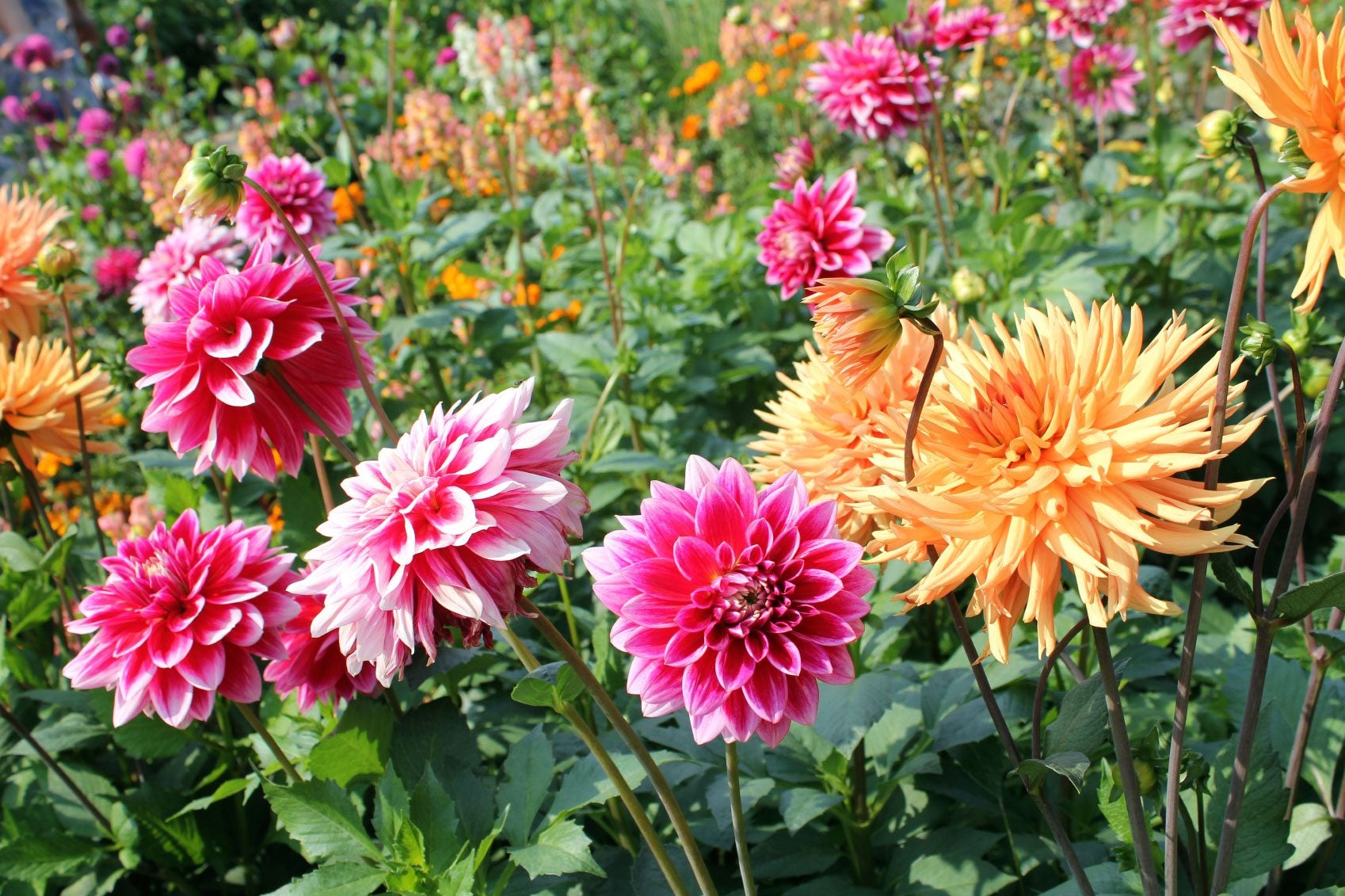Dahlia Flower Powdery Mildew: Treating Dahlias With Powdery Mildew


One day your flowers look great, the next morning you notice your dahlias with powdery mildew all over their leaves. This grayish white, talc-like growth is caused by a fungus and is a fairly common problem. It generally doesn't kill the host plant, but the leaves can become distorted, discolored, withered, and fall off.
What is Dahlia Flower Powdery Mildew?
Many species of fungi can cause powdery mildew in ornamental plants. Golovinomyces cichoracearum (formerly Erysiphe cichoracearum) has been identified as the fungus species that commonly infects the dahlia flower. Powdery mildew doesn't generally spread to flowers in other plant families, as the various species of fungi are host specific.
Powdery mildew on dahlias is often precipitated by high humidity (over 95%), moderate ambient temperatures in the 68 to 86 degrees F. (20-30 C.) range, and low light conditions. Outbreaks are common in the spring and fall due to the wide variation of ambient temperatures during a 24 hour period. This invasive fungus is also a common problem in greenhouses where it infects healthy plants by colonizing on the surface of the leaves.
Controlling Dahlia Powdery Mildew
When it comes to powdery mildew on dahlias, preventing the spread of fungi spores is the key. Powdery mildew spores are transported by air movement or water splashing. Once the spores land on neighboring dahlia leaves, they germinate. The fungus obtains nutrients by penetrating the plant's epidermis with haustori, which are specialized feeding structures.
Removing and properly disposing of infected foliage is the best method for controlling dahlia powdery mildew. In the greenhouse setting, weeds and volunteers can serve as a host for the fungus. The fungus can also overwinter on plant debris. Annual fall cleanup is recommended for outside flower beds.
Best management practices also include:
- Improving air circulation around plants. Avoid overcrowding of seedlings in the greenhouse. Leave adequate space around dahlias when planting outdoors.
- Water in the morning so the sun's heat can dry the plants leaves. Better yet, water the ground at the base of plant rather than spraying the leaves. Limit the practice of plant misting in greenhouses.
- Sanitize and disinfect pots, planters, trays, and tools.
Fungicides are also useful in eradicating dahlia powdery mildew. Treatment should begin as soon as the problem is detected. Apply these products every seven to ten days. (For outside beds, reapply after rain). Be sure to thoroughly saturate the surface of the leaves for the best efficiency.
Sign up for the Gardening Know How newsletter today and receive a free copy of our e-book "How to Grow Delicious Tomatoes".
Continued use of fungicides in the same chemical class can create resistant strains of fungus. Alternating fungicides and limiting applications of any one chemical will be necessary for continual dahlia powdery mildew treatment.
For organic control of powdery mildew on dahlias, a sulfur solution can be used. This works by creating an inhospitable environment for the fungus, so resistance isn't a problem. Gardeners should avoid using sulfur when the ambient temperature is above 85 degrees F. (29 C.), as this can cause plant injury. Sulfur fungicides are commercially available.

Laura Miller has been gardening all her life. Holding a degree in Biology, Nutrition, and Agriculture, Laura's area of expertise is vegetables, herbs, and all things edible. She lives in Ohio.